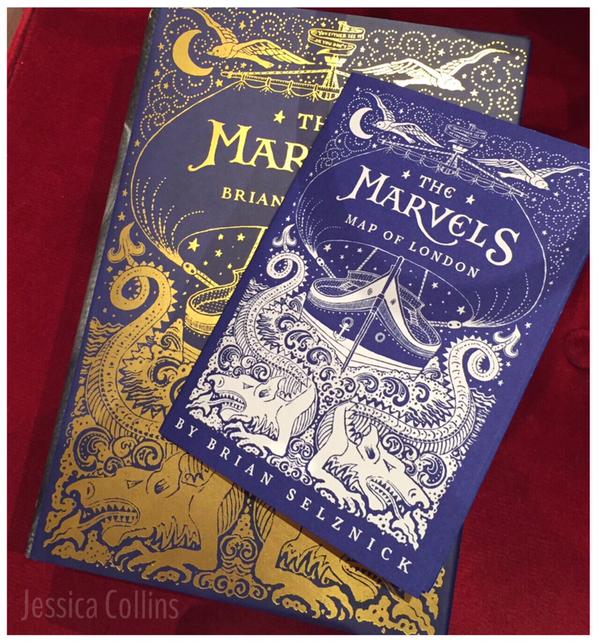
A few months ago, I had the amazing opportunity to interview Brian Selznick. We met the day after "The Marvels" was released, and while I tried to appear calm and collected, inside I was screaming, "oh my goodness, I'm talking to Brian Selznick!" I was a huge fan of "The Invention of Hugo Cabret" and "Wonderstruck" and was ridiculously excited about my new copy of "The Marvels" that he so kindly signed for me.
I couldn't wait to dive into the book, until he said he saw "Hugo," "Wonderstruck," and "The Marvels" as a trilogy. He assured me there would be other books that felt related, but the trilogy that began with "Hugo" and continued through "Wonderstruck" would conclude with this book. I got home and couldn't begin reading. I knew once I started, the end was closer. I waited months for "The Marvels" to come out, and now I sat with the book unopened. I knew that I would find the right time to read it, and I waited.
With the start of 2016 and reading resolutions, I decided I was finally ready to embark on the journey Brian Selznick would take me on in "The Marvels" and dove in. Like "Hugo" and "Wonderstruck," he combines words and images to tell the story or stories, although in each story he takes a different approach to the combination of words and images (seriously, read them all: it's an amazing journey). "The Marvels" opens with almost 400 pages of images in which the reader follows the story of a family through generations. While initially one may wonder how you "read" pictures, once you start really looking at them and turning the pages, you realize you are reading a language you thought you had forgotten but immediately find somewhere deep in your memory. The story of the Marvel family unfolds through these images taking the reader from a shipwreck, to an island, a rescue, a theatre, a stage, and eventually to generations of successful actors.
The images end abruptly, and we travel 100 years to the story of young Joseph who has just run away from boarding school and is searching for an uncle he has never met. He finds his uncle, meets friends he never expects, finds a house that is a time machine of sorts, tries to solve a mystery that he believes will help him understand his family, and finds that sometimes there is a very fine line between what is real and what isn't.
Without giving away too much of the story, all I can say is go out and buy this book today. While Selznick's intended audience is children, his stories extend beyond just a small age group and should be read by all. He tackles issues that we can all relate to, and perhaps learn from the characters' experiences.
While many books have brought tears to my eyes, I cried for a character in this book as I would for "real life human" friend. Selznick has a way of creating these characters that the reader truly knows and cares about. There is magic in his storytelling. The story sweeps the reader into the pages in such a way that I found this book impossible to put down. Yes, it is 600 pages, so give yourself a nice long afternoon to sit down and dive in.
I truly enjoyed reading this book. The story, the words, the images were all equally captivating, and reading it was such an awesome experience. If you only read a few books that I mention in this column, please choose this one as one of them. I know I will read this book again and again, so while the trilogy may technically be over, I plan to revisit this book as well as "Hugo" and "Wonderstruck" many, many more times. For me, "The Marvels" will always hold a special place in my heart because it was the book that gave me the opportunity to meet one of the writers I consider a superhero of bookmaking.
Photo by Jessica Collins
N